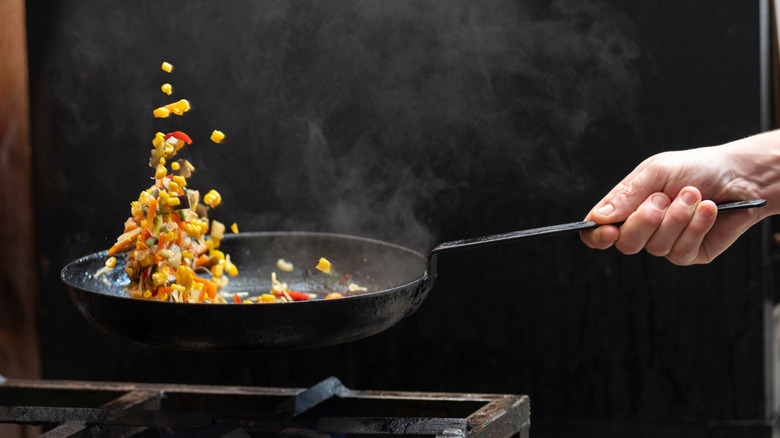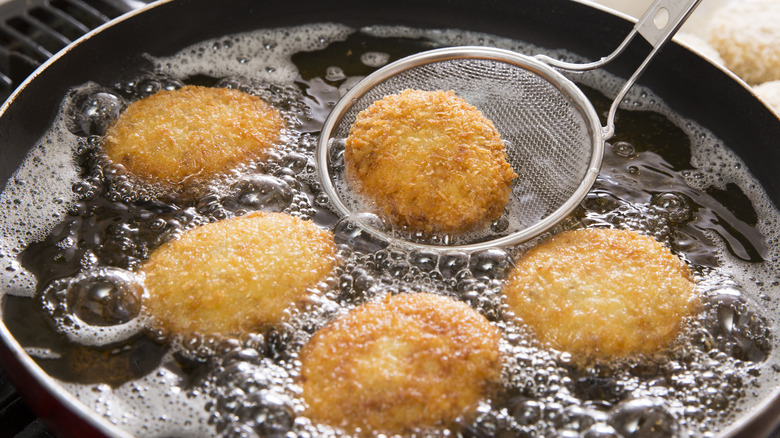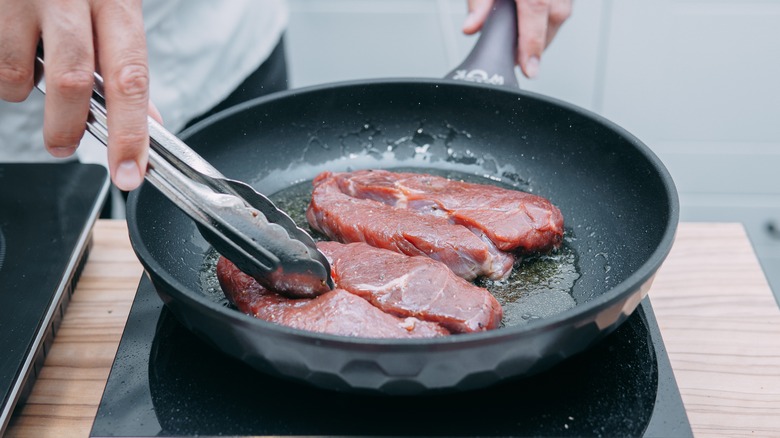Is There A Difference Between Sautéing And Frying?
There are a lot of essential recipe terms bandied about in cooking. Among the most common terms you'll come across are boiling, steaming, and braising, which are all examples of moist heat cooking methods, as well as grilling, frying, and sautéing, which are dry cooking methods. However, it's the final two — frying and sautéing — that seem to cause a fair bit of confusion over whether they are different or if the terms are interchangable.
No doubt you've read, heard, and seen in any number of television programs and cookbooks, professionals describing cooking ingredients with the terms sautéd and fried. However, unless it is spelled out in exact detail, it can be a little difficult to observe the subtle differences between these two cooking methods. While frying and sautéing may seem similar at first glance, they are indeed quite different — and it all comes down to heat and oil.
What is frying?
Frying food has become a blanket term used to cover a lot of different cooking methods. Sautéing, deep frying, shallow or pan frying, oven frying, and stir frying are all tucked under that blanket. The actual definition of frying is to cook or immerse an ingredient in hot fat or oil, usually over a medium heat to keep the oil from burning.
Considered a dry cooking method because fat is used as opposed to water, frying is applicable and efficient across a wide variety of foods. We're all familiar with deep frying — it is difficult to confuse large vats of bubbling oil with the medium to large sized pans used to sauté. Shallow frying is when you fill a heavy bottomed pan with oil and allow it to heat up. The food should sizzle on contact, and only be about half covered by the oil. The food is cooked on both sides, then dried on paper towels to get rid of excess moisture. The results in an even, golden brown, and crispy crust. Cooking bacon or ground beef in a pan is another example of shallow frying, as they will render their own fat and continue to cook in it.
Shallow frying is very often confused with sautéing because the methods look similar. Cooking in a medium or large pan with a fat is indeed part of the method for sautéing, but there are two major areas in which the methods differ. Those areas are heat level and oil amount.
What is sautéing?
Sautéing should always be done over high heat with just enough oil to lubricate the pan so as to keep food from sticking. In French, sauté means "jump." This is indicative of two things; First, the sound of the moisture evaporating from whatever is being sautéd makes a crackling, jumping sound; second, the chef will, especially with vegetables, move the food around quickly in the pan, making it jump so nothing sticks.
Sautéing is perfect for tender cuts of meat, like ribeye or skirt steak. It's also a great method for poultry and fish, which are suited well to cooking quickly over direct high heat. A good cut of meat for sautéing shouldn't be any more than two inches thick. The meat should be dried beforehand in order to get a good sear, and the pan must never be covered once cooking has begun. The cover will keep in steam, introducing moisture which will affect the browning of the meat.
While frying can refer to several different ways of cooking, sautéing is highly specific method that is heavily favored by professional chefs for how quick it can make a meal. So, remember: if it's over high direct heat and uses very little cooking fat, it's sautéing.


